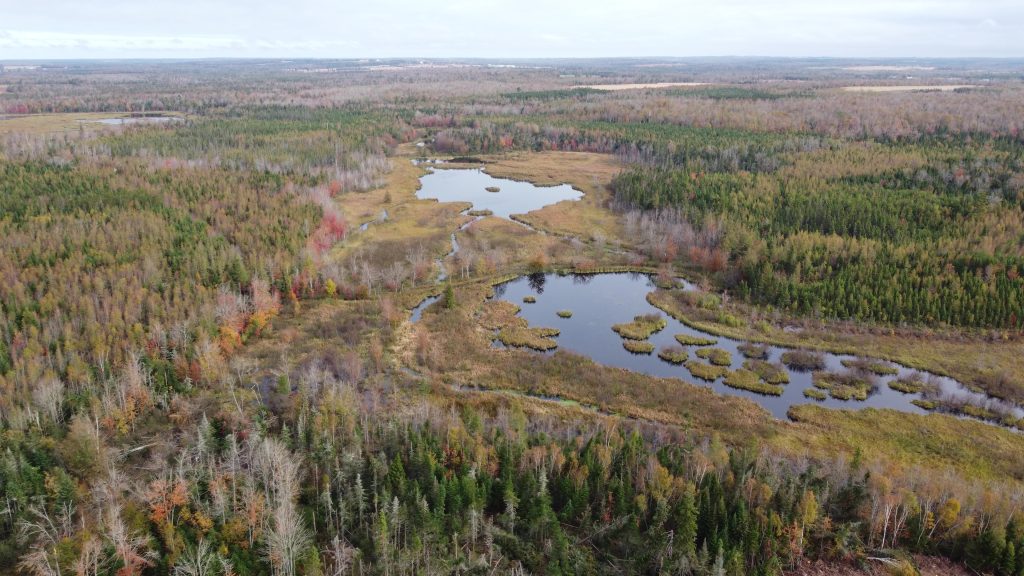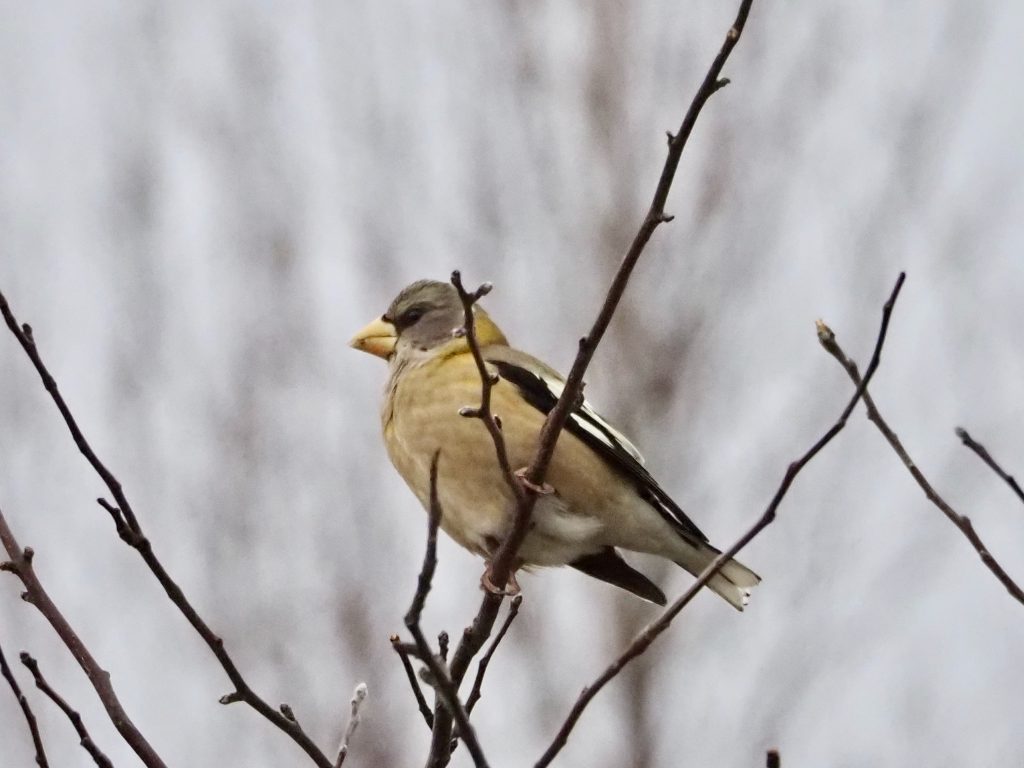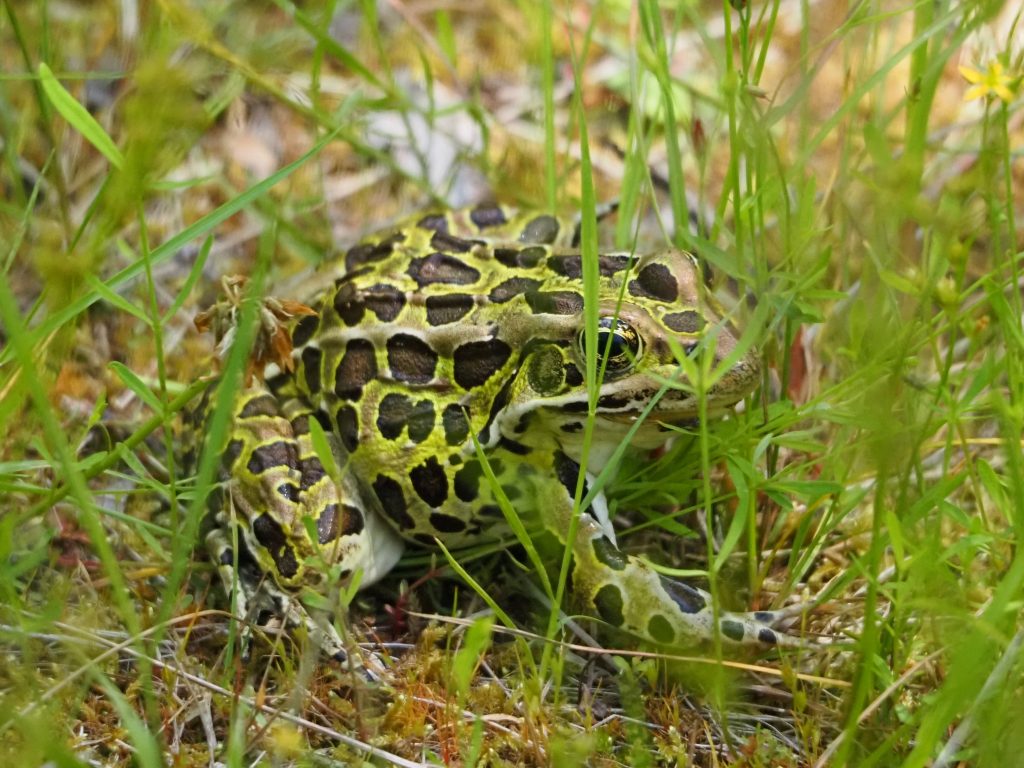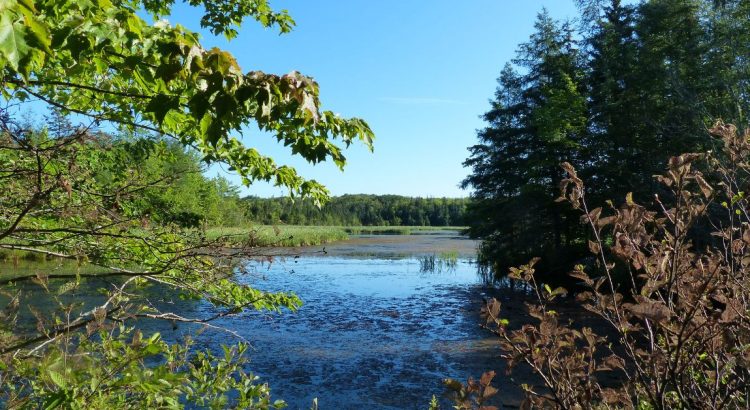The Jenkins Complex Natural Area is an 840 acre protected area in Mount Albion, PEI, one of the largest designated natural areas in the province. Throughout the property is a mix of woodland including some plantations, as well as nine wetland complexes and a small agricultural area.
Natural Area Map
Acquisition and Legal Status
Much of the land making up this large natural area was generously donated by Harold and Mary Jenkins, with a life estate held until Island Nature Trust fully acquired the property on June 24th, 1999. The Jenkins Complex Natural Area was protected under the Natural Areas Protection Act on June 25th, 1999.
Island Nature Trust purchased an adjoining parcel of 7 acres on December 20th, 2007. It was added to the larger natural area, and protected under the Natural Areas Protection Act on December 18th, 2009. Ducks Unlimited Canada (DUC) contributed funds towards the latter purchase.
On November 11, 2021, Island Nature Trust purchased an additional 90 acres adding onto the larger natural area complex and connecting it to Whites Road. This parcel was protected under the Natural Areas Protection Act on August 24, 2022.
History of the Jenkins Complex
Robert Jenkins, director and founder of the Mount Albion Fur Company (established in 1903), was a pioneer in the introduction of the American beaver to PEI , starting around 1913. His company acquired numerous properties in the Mount Albion area and excavated the first pond, purpose-built for beavers, using a horse and scoop to divert the creek. The beavers proliferated and created their own additional ponds by flooding and diversion of water.
Spurgeon Jenkins, Harold Jenkins’ father, carried on the work started by the Fur Company with the re-introduction of beavers in the 1940s and later in the 1950s after they had been trapped out. He was successful in creating 6 bypass ponds on the Mount Albion properties as well as re-establishing other wetlands there.
Harold Jenkins, the land donor, helped his father work on the marshes and ponds. After working as a hunting guide and noticing a decline in the number of ducks and geese in the area, Harold decided to create a wildlife reserve (now known as the Jenkins Complex Natural Area). Harold stopped hunting himself in order to focus his time on waterfowl conservation and creating a safe resting and feeding area for nesting and migrating birds. His efforts were put towards creating nesting islands, nest boxes, planting wild rice and he even spent countless hours patrolling for poachers, all in an attempt to help waterfowl.
In 1978, Ducks Unlimited entered into an agreement with Harold to maintain the bypass ponds and Island Nature Trust has continued this partnership, with DUC regularly maintaining the nine ponds that lie within the Jenkins Complex Natural Area.
Ecological Description
Tree species vary as you walk through the various forest stands, but the dominant tree is black spruce and the dominant ground cover is sphagnum moss, indicating a high natural water table. Other tree species you will find include: red maple, striped maple, sugar maple, white birch, yellow birch, gray birch, white pine, American beech, balsam fir, eastern larch, red spruce, white spruce, trembling aspen, large-toothed aspen, and pin cherry. Shrub species present in the natural area include: serviceberry, sweet fern, honeysuckle, sheep laurel, Labrador tea, mountain holly, willow, red-berried elder, beaked hazelnut, ground hemlock, wild raisin, and choke cherry. The Jenkins Complex Natural Area is also home to several uncommon herbaceous plants, including: royal fern, showy lady’s slipper, wild calla, sundew, and white bog orchid.

In 2018, the Jenkins Complex Natural Area was included in Island Nature Trust’s Forest Bird Program. Point count surveys were conducted at 3 locations and the following species were detected: Canada warbler (a Threatened species), ovenbird, hermit thrush, black-capped chickadee, common yellowthroat, black-throated green warbler, white-throated sparrow, American robin, red-eyed vireo, blue jay, alder flycatcher, yellow warbler, rosebreasted grosbeak, magnolia warbler, black-and-white warbler, blue-headed vireo, dark-eyed junco, yellowrumped warbler, and ruby-crowned kinglet. Several species of water birds were also detected, including: Canada geese, red-winged blackbird, and sora rail. A common loon was heard and a pair may be nesting in the pond complex. Red squirrel, American beaver, coyote, red fox, snowshoe hare, mink, raccoon, northern leopard frog, green frog, and wood frog have also been observed in the Jenkins Complex Natural Area.


Access
The Jenkins Complex Natural Area can be accessed at several points along the 48 Road (Route 5). From Charlottetown, travel east on the Trans-Canada Highway to Mount Albion, turn onto Route 5 and approximately 4km down the road is an Island Nature Trust sign and padlocked gate marking the western boundary of the Jenkins Complex Natural Area. This gate provides access to the extensive road and trail system that runs throughout the natural area. Approximately 1 km east is another gate and right-of-way beside a mobile home. This gate also provides access to the trail systems. Approximately 0.5 km east from the second gate is a third gate that allows access to the eastern most ponds in the natural area.
Trails can be seen on the interactive map above.
For more information on access to our natural areas or our trails, please contact our Land Stewardship Team.

